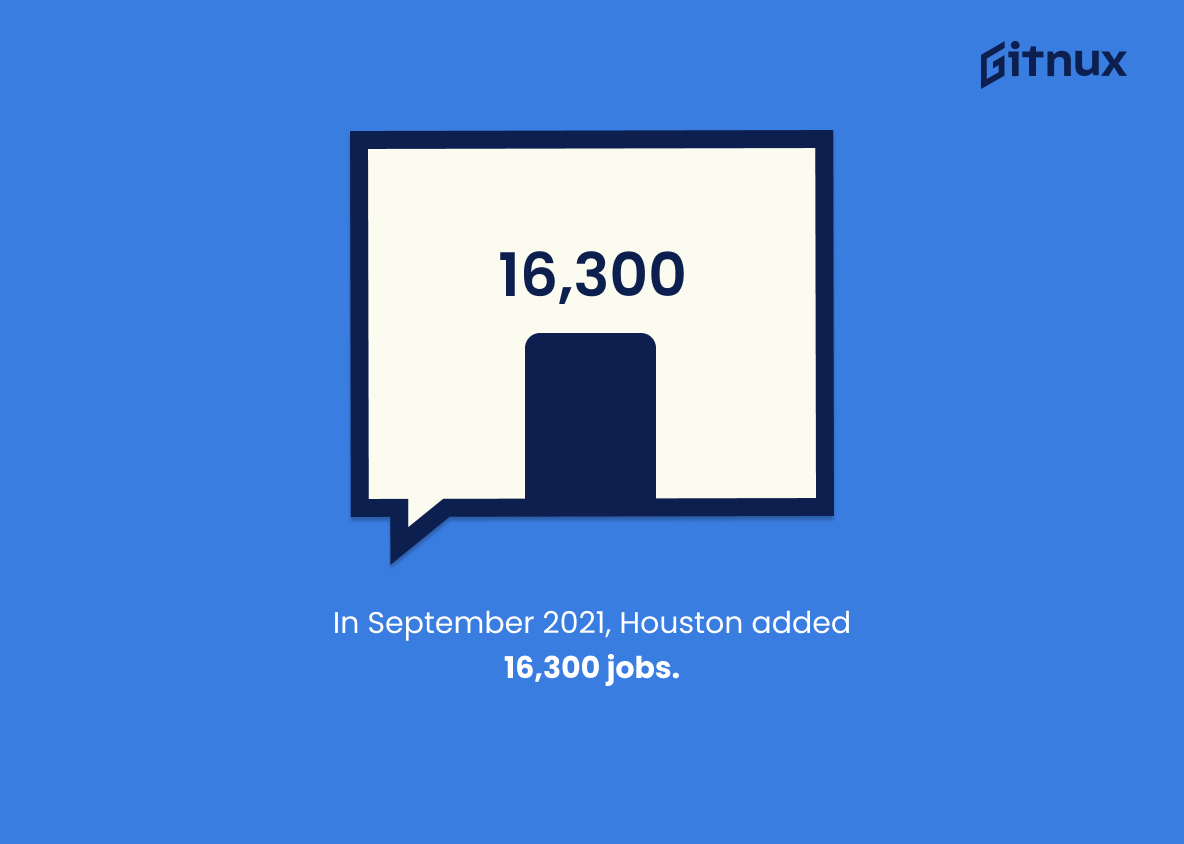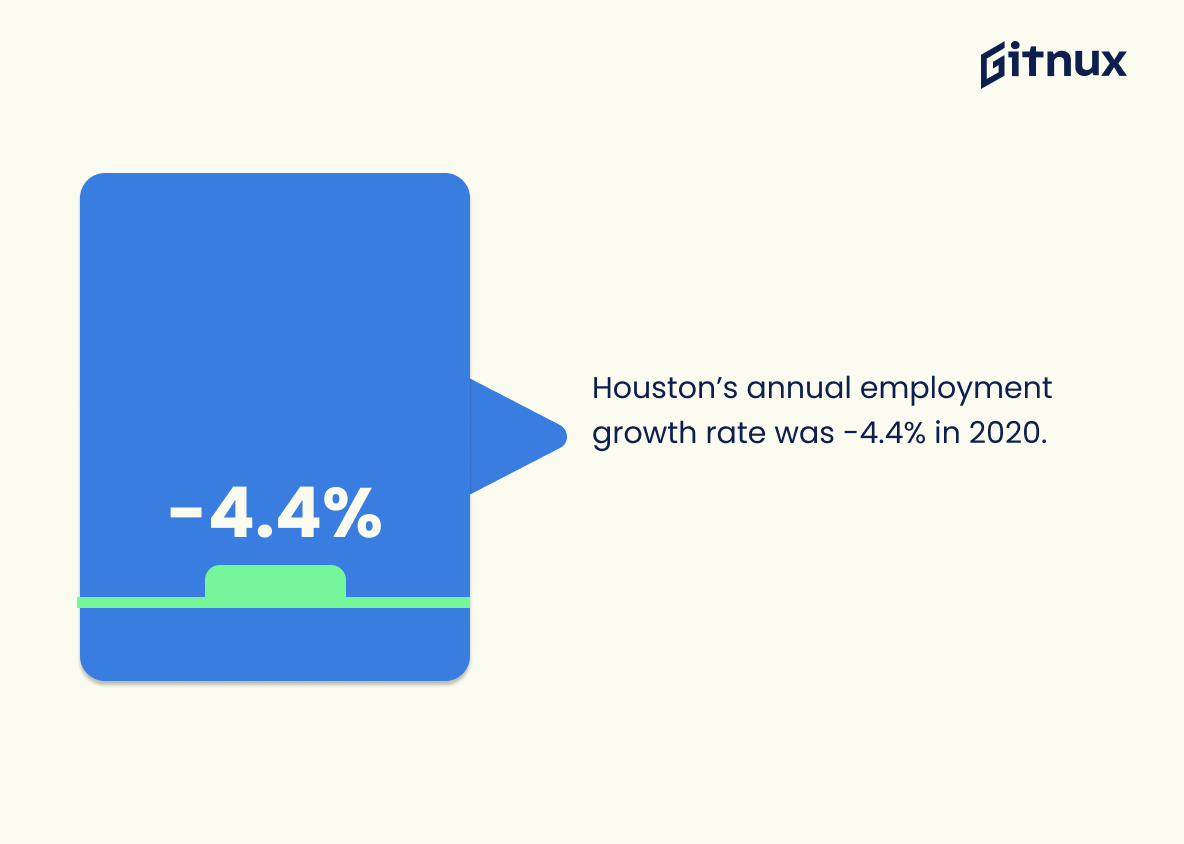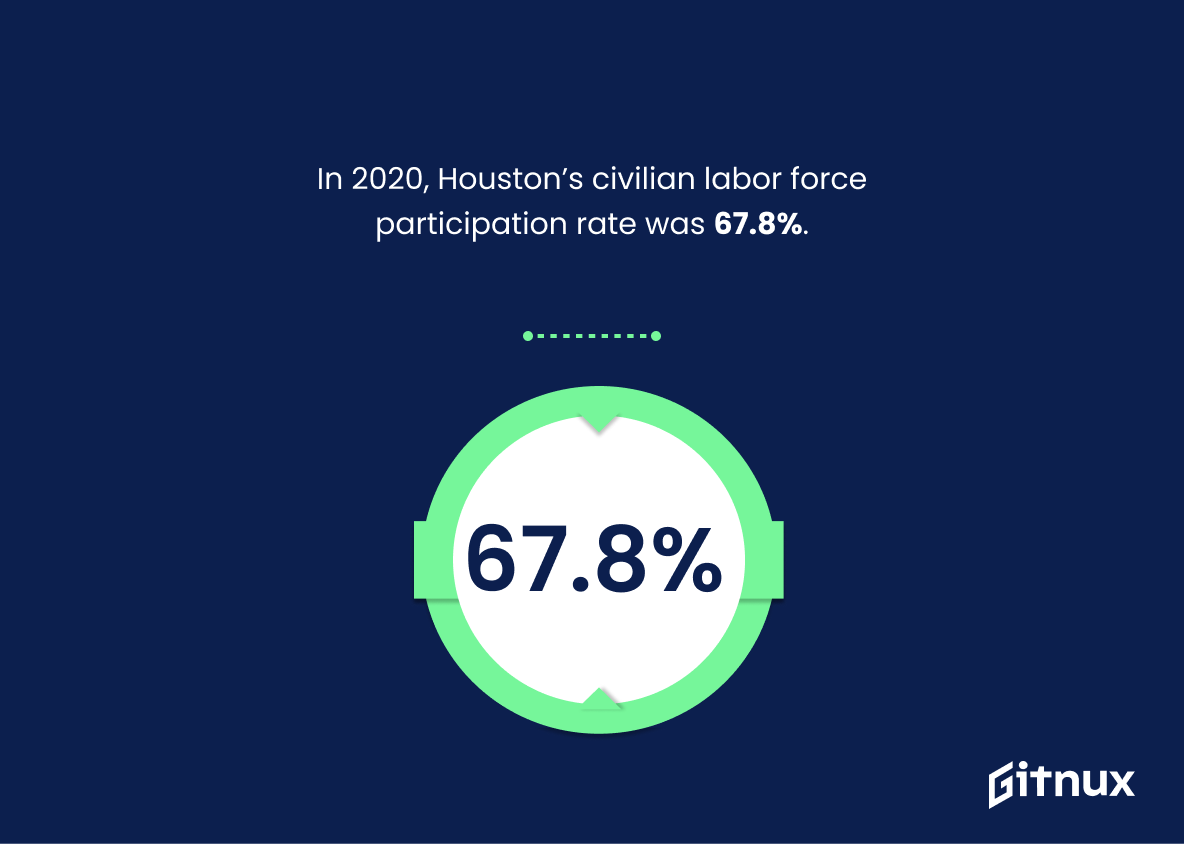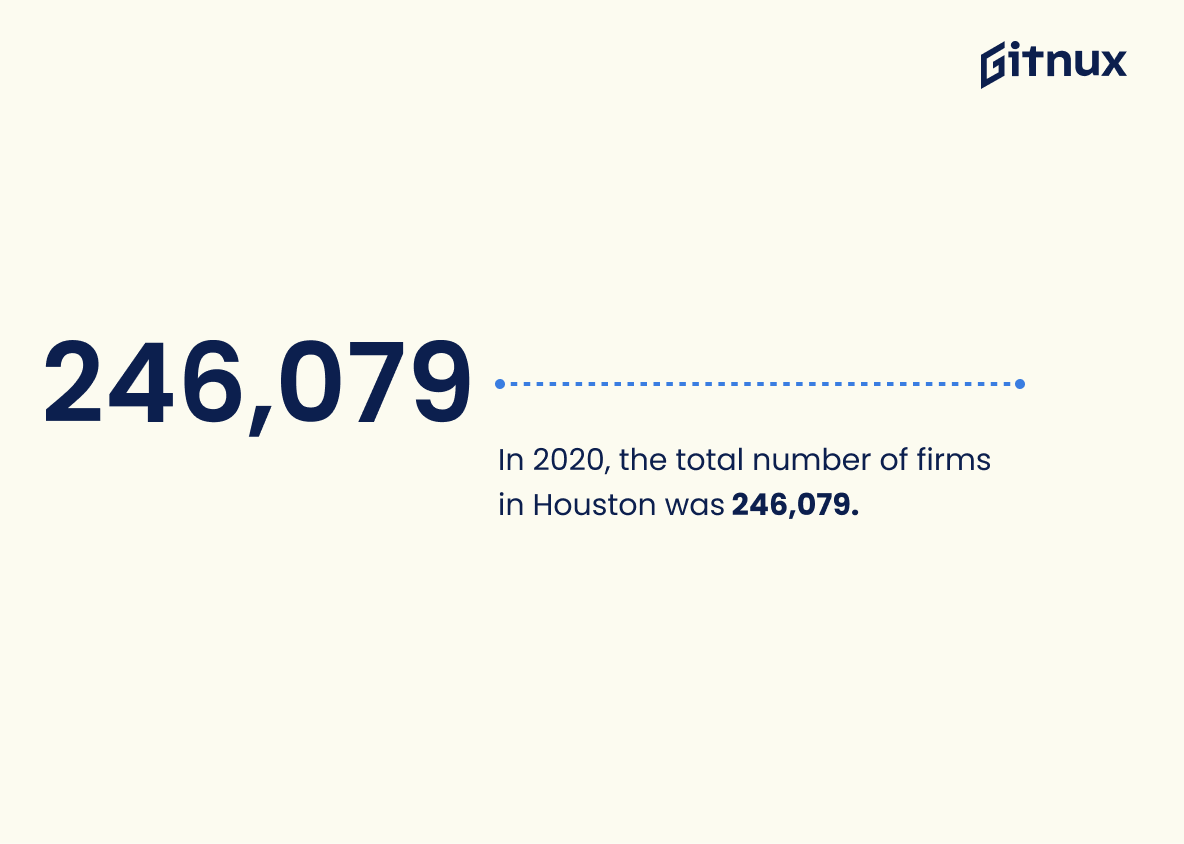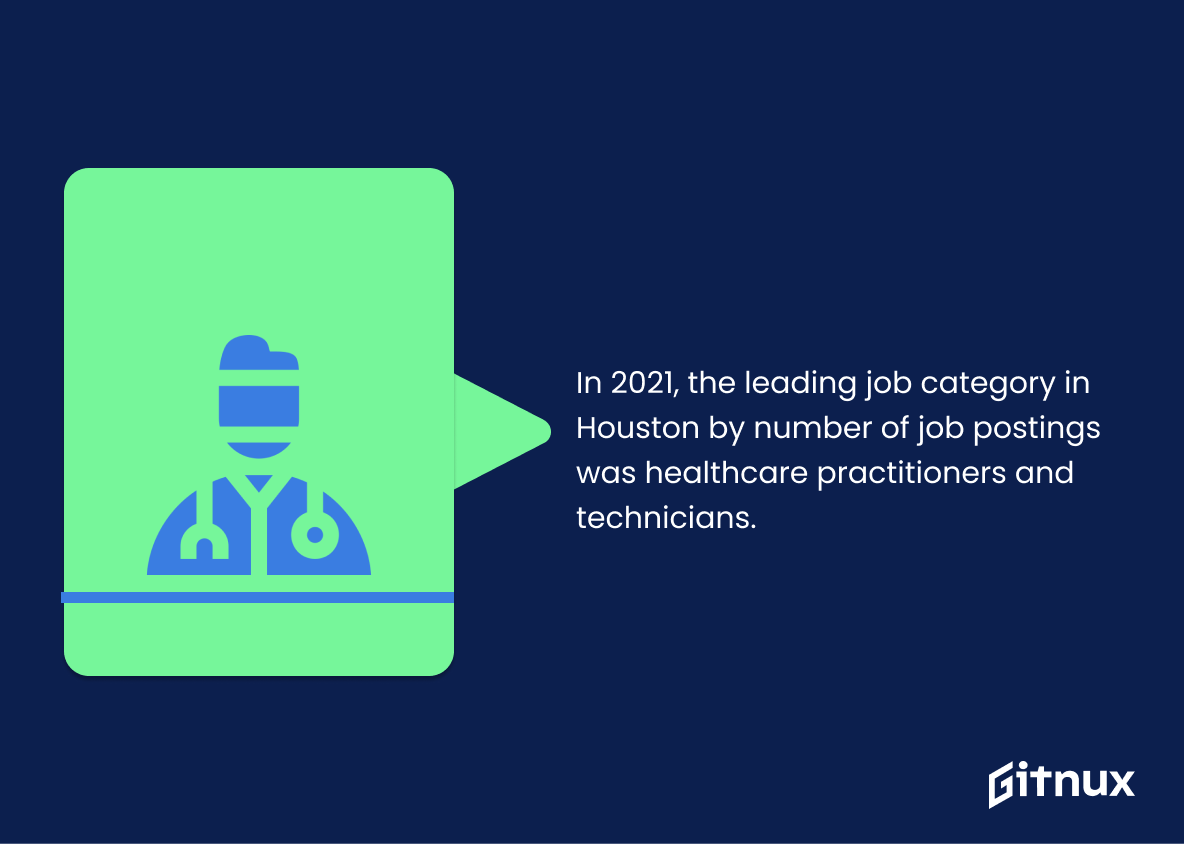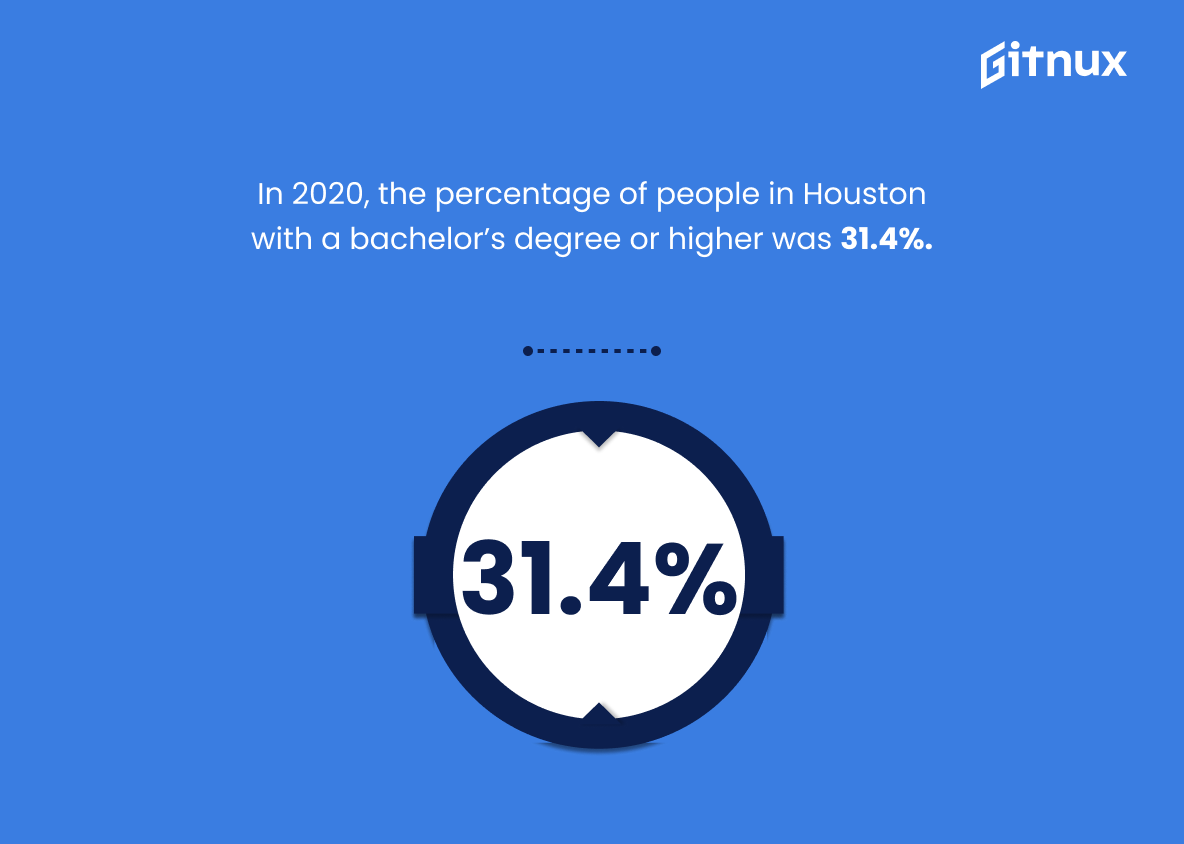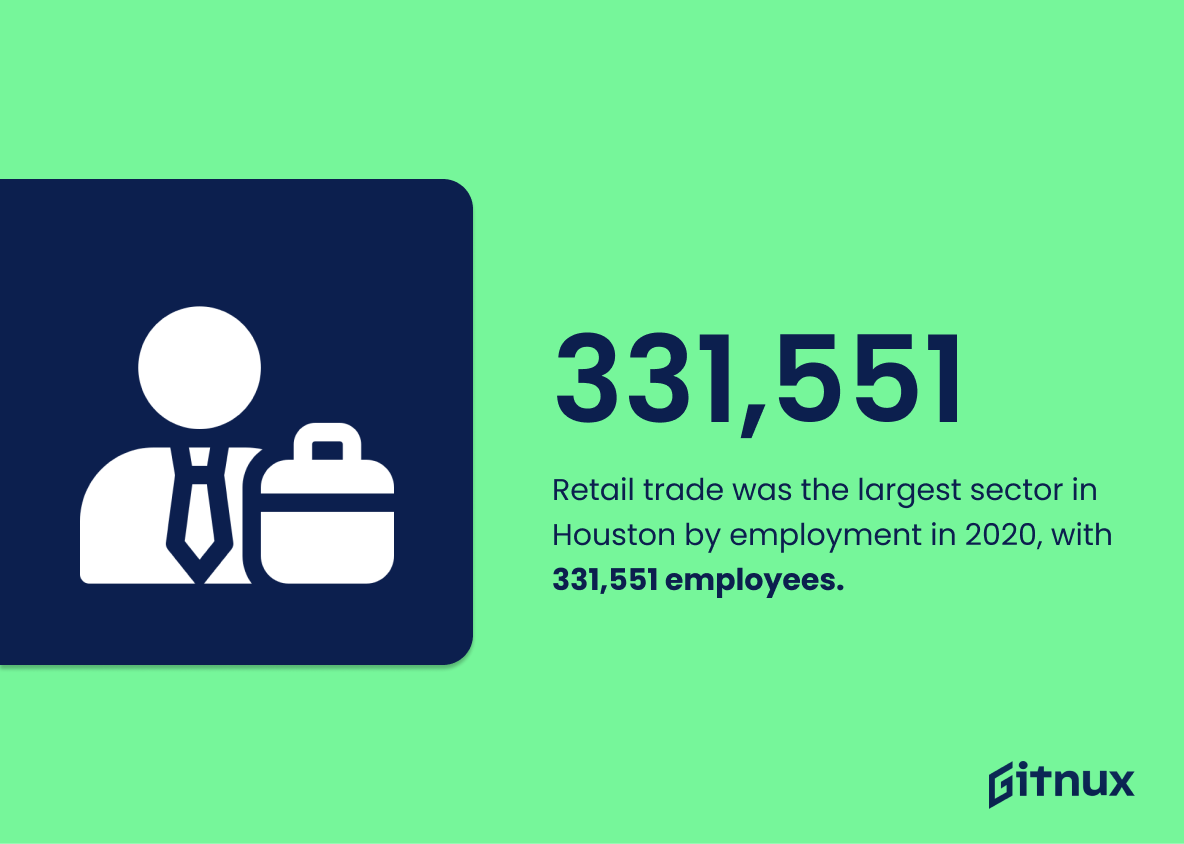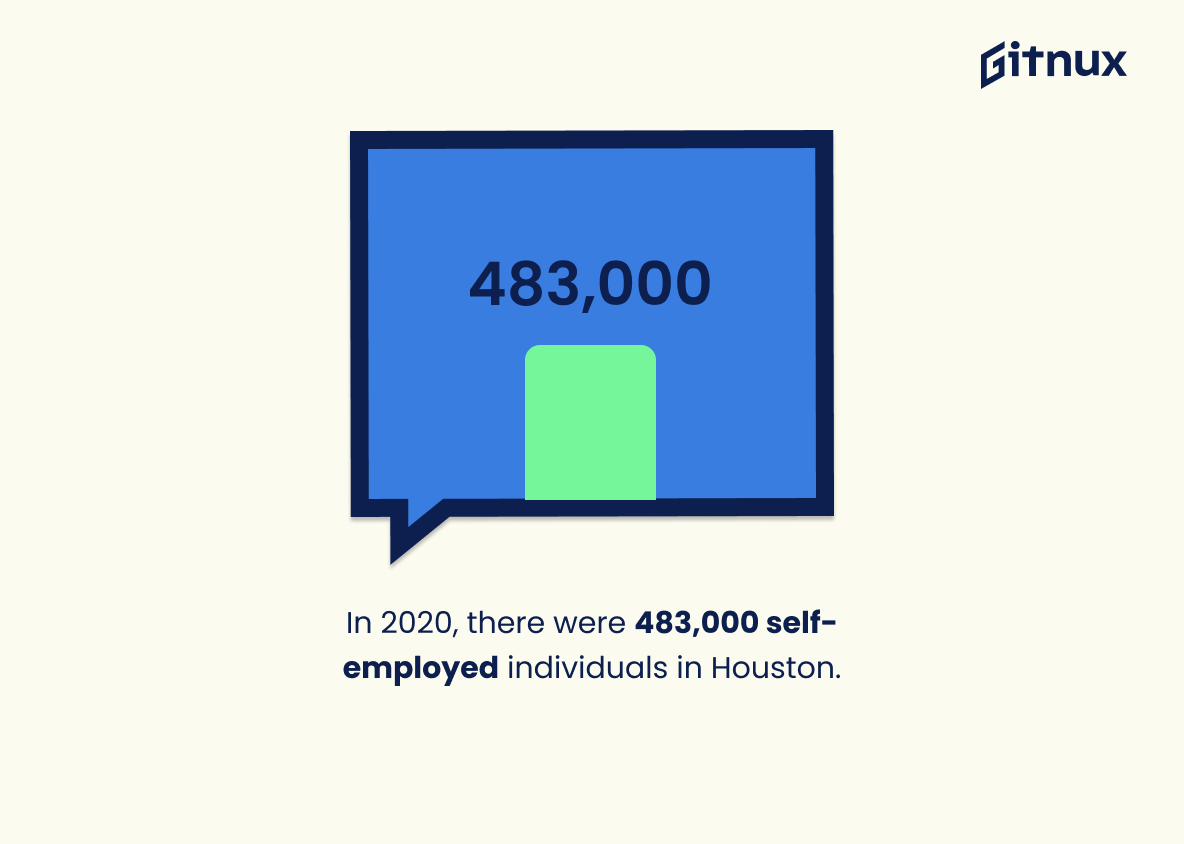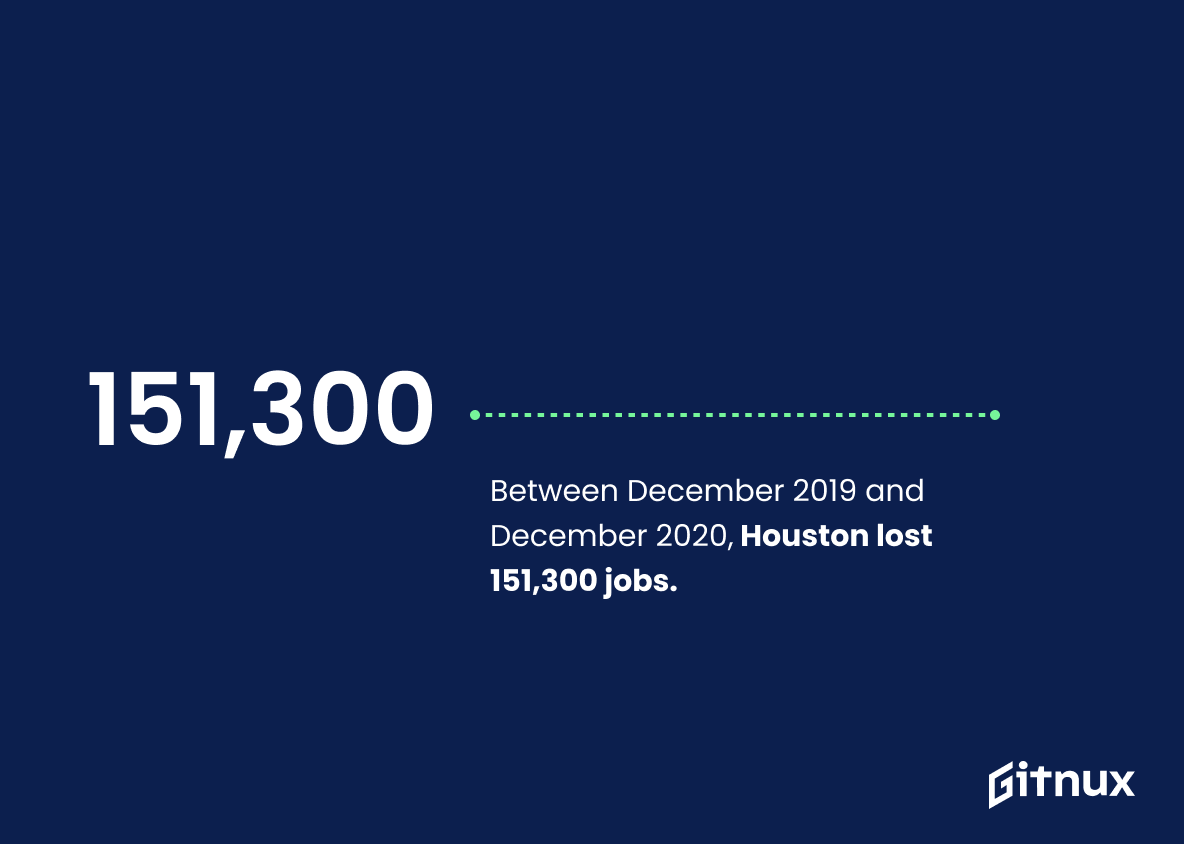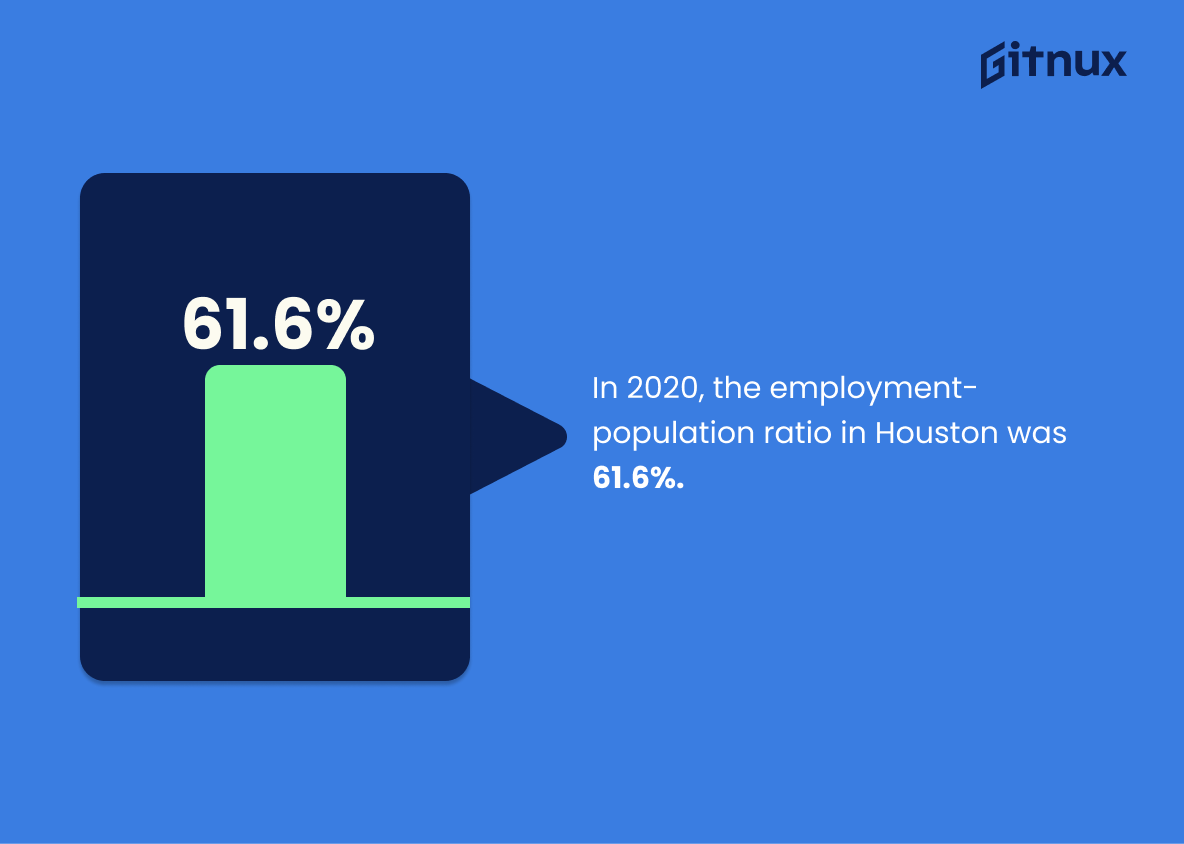Houston is a major economic hub in the United States, and its employment statistics are an important indicator of the city’s overall health. This blog post will explore Houston’s current employment landscape by looking at 20 different statistics related to unemployment rate, labor force size, largest industries by employment, job growth rate, average weekly wage, annual employment growth rate, civilian labor force participation rate median household income poverty rates total number of firms leading job category percentage of people with bachelor’s degree or higher retail trade sector self-employed individuals jobs lost between December 2019 and 2020 Employment-population ratio median age of labor force working from home energy industry healthcare & social assistance sector.
The statistic of Houston’s unemployment rate in August 2021 being 5.9% is a crucial indicator of the city’s economic health. It provides insight into the current job market and the number of people who are actively seeking employment. This statistic is a valuable resource for anyone looking to understand the current state of Houston’s employment landscape.
In 2020, Houston had a labor force of 3.3 million.
The statistic of Houston’s labor force of 3.3 million in 2020 is a crucial piece of information when discussing Houston Employment Statistics. It provides a snapshot of the city’s current employment landscape, giving insight into the number of people actively seeking employment and the size of the workforce. This statistic is essential for understanding the current state of the job market in Houston and can be used to compare the city’s employment situation to other cities or to previous years.
Houston Employment Statistics Overview
The five largest industries by employment in Houston are Trade, Transportation and Utilities; Professional and Business Services; Education and Health Services; Government; and Leisure and Hospitality.
This statistic is a valuable insight into the Houston job market, providing a comprehensive overview of the industries that employ the most people in the city. It highlights the sectors that are driving the local economy, and provides a useful starting point for anyone looking to gain employment in Houston. Furthermore, it can be used to identify potential areas of growth and development, as well as areas of potential decline. By understanding the industries that are most prominent in Houston, businesses and individuals can make informed decisions about their career paths and investments.
In September 2021, Houston added 16,300 jobs.
The news of Houston adding 16,300 jobs in September 2021 is a cause for celebration in the Houston employment statistics blog post. This is a significant increase in employment opportunities for the city, and it is a sign of a healthy and growing economy. This statistic is a testament to the hard work of the people of Houston and the dedication of the city’s employers to providing quality jobs. It is a positive indicator of the city’s economic health and a sign of hope for the future.
In the second quarter of 2021, Houston’s average weekly wage was $1,238.
The statistic of Houston’s average weekly wage in the second quarter of 2021 is a telling indicator of the city’s economic health. It provides insight into the financial stability of the city’s workforce, and can be used to measure the success of job creation initiatives. Additionally, it can be used to compare Houston’s wages to other cities, and to track changes in wages over time. This statistic is an important piece of the puzzle when it comes to understanding Houston’s employment statistics.
Houston’s annual employment growth rate was -4.4% in 2020.
The -4.4% annual employment growth rate in Houston in 2020 paints a stark picture of the economic impact of the pandemic on the city. It serves as a reminder of the immense challenges faced by Houstonians in the labor market, and the need for continued support and resources to help them get back on their feet.
In 2020, Houston’s civilian labor force participation rate was 67.8%.
The statistic of Houston’s civilian labor force participation rate in 2020 is a telling indicator of the city’s employment landscape. It provides insight into the number of people actively seeking employment in the city, and can be used to measure the overall health of the local job market. This statistic is especially important in the context of a blog post about Houston Employment Statistics, as it can be used to compare the city’s labor force participation rate to other cities, and to track changes in the rate over time.
In 2020, the median household income in Houston was $52,338.
The median household income in Houston in 2020 serves as a benchmark for the economic well-being of the city’s residents. It provides insight into the financial stability of the city’s households and can be used to measure the success of initiatives aimed at improving the economic prospects of Houstonians.
In 2020, Houston’s poverty rate was 18.8%.
The statistic of Houston’s poverty rate in 2020 is a telling indicator of the city’s employment situation. It speaks to the number of people who are unable to make ends meet and are struggling to make a living. This statistic is a reminder that there is still much work to be done in order to ensure that everyone in Houston has access to the resources and opportunities they need to succeed.
In 2020, the total number of firms in Houston was 246,079.
The statistic that the total number of firms in Houston in 2020 was 246,079 is a crucial piece of information when discussing Houston Employment Statistics. It provides insight into the number of businesses that are operating in the city, which can be used to gauge the level of economic activity and the potential for job growth. Additionally, it can be used to compare the number of firms in Houston to other cities, providing a better understanding of the city’s competitive advantages and disadvantages.
In 2021, the leading job category in Houston by number of job postings was healthcare practitioners and technicians.
This statistic is a telling indication of the current state of Houston’s job market. It speaks to the fact that healthcare practitioners and technicians are in high demand, and that the city is actively seeking out qualified individuals to fill these positions. This is a positive sign for the city, as it shows that the healthcare industry is thriving and that there are plenty of opportunities for those looking to enter the field. Furthermore, it highlights the importance of healthcare in the city, and the need for qualified professionals to provide quality care to its citizens.
In 2020, the percentage of people in Houston with a bachelor’s degree or higher was 31.4%.
The statistic that in 2020, 31.4% of people in Houston had a bachelor’s degree or higher is an important indicator of the city’s educational attainment and its potential for economic growth. This figure speaks to the city’s ability to attract and retain a highly educated workforce, which is essential for businesses to thrive and for the city to remain competitive in the global economy. Additionally, this statistic can be used to measure the success of educational initiatives in the city, such as the availability of higher education opportunities and the quality of the educational system.
Retail trade was the largest sector in Houston by employment in 2020, with 331,551 employees.
The fact that retail trade was the largest sector in Houston by employment in 2020 speaks volumes about the city’s economy. It shows that Houston is a hub for retail businesses, providing a large number of jobs for its citizens. This is a testament to the city’s commitment to creating a strong and vibrant economy, and it is a sign of the city’s potential for continued growth and prosperity.
In 2020, there were 483,000 self-employed individuals in Houston.
The fact that there were 483,000 self-employed individuals in Houston in 2020 is a telling statistic that speaks to the city’s entrepreneurial spirit and the opportunities available for those looking to start their own business. It is a testament to the city’s commitment to providing a supportive environment for those looking to take the plunge into self-employment. This statistic is an important part of the overall picture of Houston’s employment landscape and should be taken into consideration when discussing the city’s employment statistics.
Between December 2019 and December 2020, Houston lost 151,300 jobs.
This statistic is a stark reminder of the economic impact of the pandemic on Houston. It paints a picture of the devastating effects of the pandemic on the city’s job market, with a loss of over 150,000 jobs in just one year. This statistic serves as a reminder of the importance of supporting Houston’s economy and job market in order to ensure a strong recovery.
In 2020, the employment-population ratio in Houston was 61.6%.
The employment-population ratio in Houston in 2020 paints a vivid picture of the city’s employment landscape. It reveals that, despite the economic downturn caused by the pandemic, 61.6% of Houston’s population was employed. This statistic is a testament to the resilience of the city’s workforce and the strength of its economy.
In 2020, the median age of Houston’s labor force was 34.2.
The statistic of the median age of Houston’s labor force being 34.2 in 2020 is indicative of the city’s workforce composition. It provides insight into the age range of the people who are actively employed in the city, which can be used to inform decisions about the types of jobs and industries that are most in demand. Additionally, it can be used to assess the potential for job growth in the city, as well as the potential for job retention and career advancement.
Only 0.8% of employed Houston residents worked from home in 2020.
This statistic is a telling indication of the impact of the pandemic on Houston’s workforce. It highlights the fact that the majority of employed Houston residents were unable to work from home in 2020, despite the widespread shift to remote work. This statistic is a stark reminder of the challenges faced by Houston’s workforce during the pandemic, and the need for further support and resources to help them navigate the changing landscape.
Conclusion
Houston’s employment statistics show a diverse and dynamic economy. The city has seen an overall decrease in jobs since December 2019, but the unemployment rate remains low at 5.9%. Trade, Transportation and Utilities; Professional and Business Services; Education and Health Services; Government; and Leisure & Hospitality are the five largest industries by employment in Houston. In 2021, healthcare practitioners & technicians were the leading job category with retail trade being the largest sector by employment. Self-employed individuals make up 483,000 of Houston’s labor force while only 0.8% work from home due to COVID-19 restrictions still in place for many businesses across Texas’ most populous city. Despite these challenges, median household income is $52 338 per year with 31.4% having a bachelor’s degree or higher education level qualification as well as 67 8 % civilian labor force participation rate which shows that there are plenty of opportunities available for those looking to join or stay part of this vibrant workforce community
References
0. – https://www.bls.gov
1. – https://www.datausa.io
2. – https://www.houston.org
3. – https://www.fred.stlouisfed.org
4. – https://www.deptofnumbers.com
5. – https://www.data.census.gov
6. – https://www.houston.org

